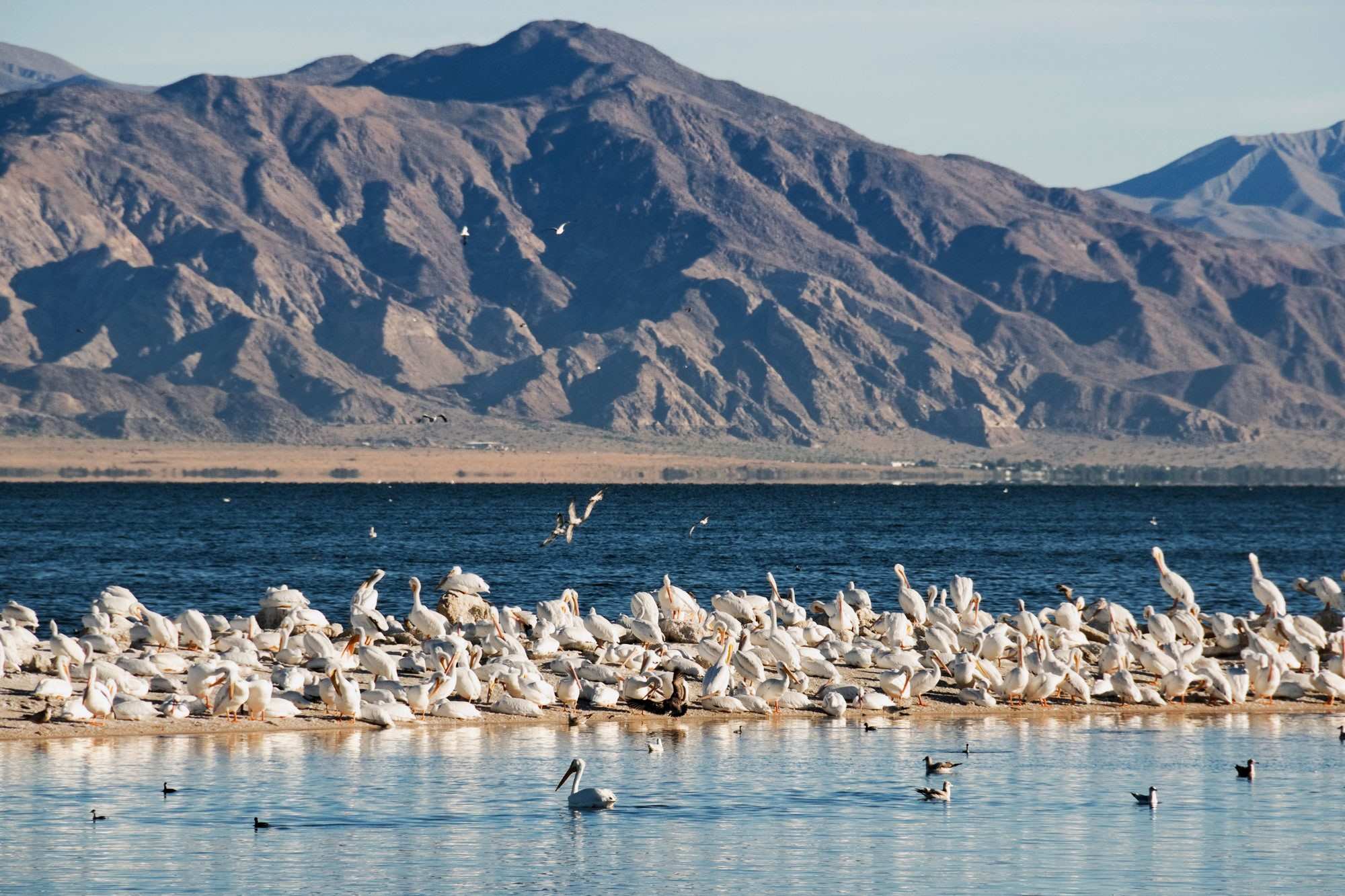
Did you know the Salton Sea was created by accident? This massive lake in California's desert wasn't always there. In 1905, engineers tried to divert the Colorado River for irrigation. Things went wrong, and water flooded into a low-lying basin, forming the Salton Sea. Once a bustling resort area, it attracted tourists, celebrities, and even hosted yacht races. Over time, however, the sea's fortunes changed. Pollution, rising salinity, and receding water levels turned it into an environmental challenge. Today, the Salton Sea is a mix of history, mystery, and ecological concern. Let's dive into 35 intriguing facts about this unique body of water and its storied past.
Key Takeaways:
- The Salton Sea, formed by accident in 1905, faces environmental challenges but remains a vital habitat for over 400 bird species, making it a key site for birdwatching.
- Despite its challenges, the Salton Sea offers recreational activities like birdwatching, camping, and fishing, and holds the world record for the largest collection of banana-related items.
Formation of the Salton Sea
The Salton Sea, a fascinating body of water in California, has a rich history. It formed in a unique way, making it a subject of interest for many.
- The Salton Sea was created by accident in 1905 when the Colorado River breached a canal and flooded the Salton Sink.
- Before the accidental flooding, the area was a dry lake bed known as the Salton Sink.
- The Salton Sea is the largest lake in California by surface area, spanning about 343 square miles.
- The lake's formation was not the first time water filled the Salton Sink; ancient Lake Cahuilla occupied the area thousands of years ago.
Environmental Changes and Challenges
The Salton Sea has faced numerous environmental challenges over the years. These changes have significantly impacted the local ecosystem and communities.
- The Salton Sea's water level has been steadily decreasing due to reduced agricultural runoff and evaporation.
- Increasing salinity levels have made it difficult for many fish species to survive in the lake.
- The lake's shrinking size has exposed toxic dust from the lakebed, causing air quality issues for nearby residents.
- Efforts to address the environmental issues have included proposals for water importation and habitat restoration projects.
Wildlife and Biodiversity
Despite its challenges, the Salton Sea remains an important habitat for various wildlife species. It serves as a critical stopover for migratory birds.
- The Salton Sea is a vital habitat for over 400 species of birds, making it a key site for birdwatching.
- The lake is part of the Pacific Flyway, a major north-south route for migratory birds.
- Fish species such as tilapia have adapted to the high salinity levels and are commonly found in the lake.
- The surrounding wetlands provide a habitat for endangered species like the Yuma clapper rail and the desert pupfish.
Human Impact and Development
Human activities have significantly influenced the Salton Sea's history and current state. These impacts range from agricultural practices to recreational developments.
- In the 1950s and 1960s, the Salton Sea was a popular resort destination, attracting tourists for boating, fishing, and swimming.
- Agricultural runoff from nearby farms has contributed to nutrient pollution in the lake, leading to algal blooms and fish die-offs.
- The construction of the All-American Canal in the 1930s diverted water from the Colorado River, reducing the inflow to the Salton Sea.
- Several communities, such as Salton City and Bombay Beach, were developed along the lake's shores but have since experienced economic decline.
Cultural and Historical Significance
The Salton Sea holds cultural and historical importance for various groups, including Native American tribes and early settlers.
- The area around the Salton Sea has been inhabited by Native American tribes, such as the Cahuilla, for thousands of years.
- The lake and its surroundings have been featured in numerous films, documentaries, and works of art.
- The Salton Sea Test Base, established during World War II, was used for military training and testing.
- The lake's unique landscape has inspired artists and photographers, making it a popular subject for creative works.
Future Prospects and Restoration Efforts
The future of the Salton Sea is uncertain, but various restoration efforts aim to address its environmental and health issues.
- The Salton Sea Management Program, launched by the state of California, focuses on habitat restoration and dust suppression projects.
- Proposals for importing water from the Sea of Cortez or the Pacific Ocean have been considered to stabilize the lake's water levels.
- Renewable energy projects, such as geothermal and solar power, are being explored in the area to provide economic benefits.
- Community organizations and advocacy groups are working to raise awareness and secure funding for restoration efforts.
Interesting Facts and Trivia
Beyond its environmental and historical significance, the Salton Sea has some intriguing and lesser-known facts that add to its mystique.
- The Salton Sea has a higher salinity level than the Pacific Ocean, making it one of the saltiest bodies of water in the United States.
- The lake's unique smell, often described as "rotten eggs," is caused by hydrogen sulfide gas released from decaying organic matter.
- The Salton Sea is home to several abandoned structures and ghost towns, remnants of its once-thriving resort era.
- The lake's fluctuating water levels have created a surreal landscape of submerged trees and buildings.
- The Salton Sea has been the subject of various scientific studies, including research on its potential for geothermal energy production.
Recreational Activities and Attractions
Despite its challenges, the Salton Sea offers various recreational activities and attractions for visitors.
- Birdwatching is a popular activity at the Salton Sea, with several designated wildlife refuges and observation points.
- The Salton Sea State Recreation Area provides opportunities for camping, boating, and fishing.
- The International Banana Museum, located near the lake, holds the world record for the largest collection of banana-related items.
- The nearby town of Niland hosts the annual Slab City Music Festival, attracting artists and musicians from around the country.
- The Salton Sea's unique landscape has made it a popular location for film and photography shoots.
Ongoing Research and Scientific Interest
The Salton Sea continues to be a subject of scientific interest, with ongoing research aimed at understanding and mitigating its environmental issues.
- Researchers are studying the lake's potential for lithium extraction, which could provide a valuable resource for the growing electric vehicle industry.
The Salton Sea's Legacy
The Salton Sea stands as a testament to nature's unpredictability and human intervention. Born from an engineering mishap in 1905, this vast inland lake has seen its share of highs and lows. Once a bustling resort destination in the mid-20th century, it attracted celebrities, tourists, and fishermen. However, rising salinity and pollution have turned it into an environmental challenge.
Despite its current struggles, the Salton Sea remains a crucial habitat for migratory birds and wildlife. Efforts to restore and preserve this unique ecosystem continue, highlighting the importance of balancing human activity with nature's needs. The story of the Salton Sea is a reminder of our impact on the environment and the ongoing need for sustainable solutions. Whether you're a history buff or an environmental enthusiast, the Salton Sea's tale offers valuable lessons and a glimpse into California's diverse landscape.
Frequently Asked Questions
Was this page helpful?
Our commitment to delivering trustworthy and engaging content is at the heart of what we do. Each fact on our site is contributed by real users like you, bringing a wealth of diverse insights and information. To ensure the highest standards of accuracy and reliability, our dedicated editors meticulously review each submission. This process guarantees that the facts we share are not only fascinating but also credible. Trust in our commitment to quality and authenticity as you explore and learn with us.


